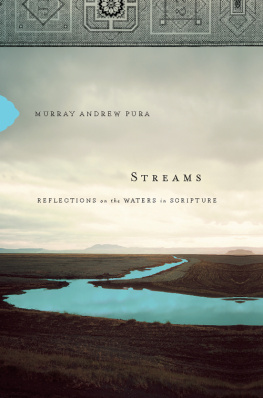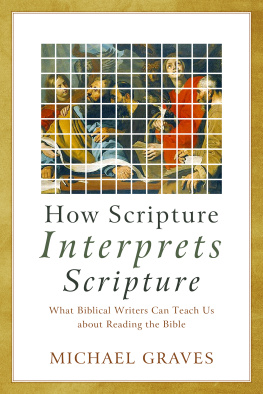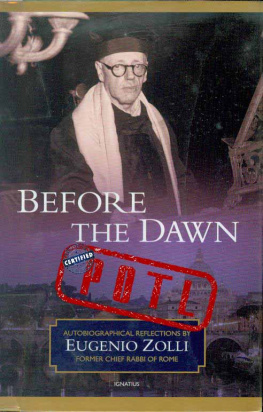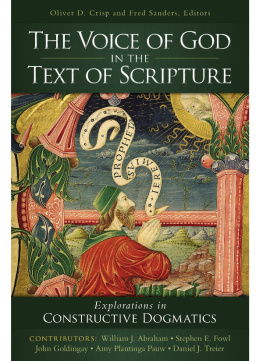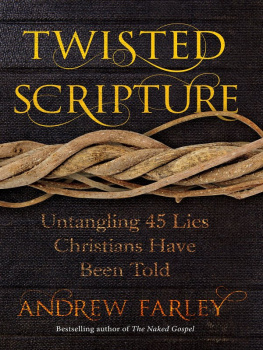COMMON GROUND
COMMON GROUND
A Priest and a Rabbi
Read Scripture Together
ANDREW M. GREELEY
and
JACOB NEUSNER

Andrew M. Greeley Enterprises, Ltd,
and Jacob Neusner 1996
ISBN 978-0-7735-3447-6
Legal deposit third quarter 2008
Bibliothque nationale du Qubec
Printed in Canada on acid-free paper that is 100% ancient forest free
(100% post-consumer recycled), processed chlorine free.
First published by The Pilgrim Press, 1996
Rabbi Neusners translations are all from Tanakh: A New Translation of the Holy Scriptures According to the Traditional Hebrew Text (Philadelphia, New York, Jerusalem: The Jewish Publication Society, 1985), 1985 by the Jewish Publication Society and quoted with permission of Jewish Publication Society.
JN thanks William Scott Green.
McGill-Queens University Press acknowledges the support of the Canada Council for the Arts for our publishing program. We also acknowledge the financial support of the Government of Canada through the Book Publishing Industry Development Program (BPIDP) for our publishing activities.
Library and Archives Canada Cataloguing in Publication
Greeley, Andrew M., 1928
Common ground : a priest and a rabbi read Scripture together/
Andrew M. Greeley and Jacob Neusner.
First ed. published New York, NY : Warner Books, cI990 under tide:
The Bible and us.
Includes bibliographical references and indexes.
ISBN 978-0-7735-3447-6
I. Bible Criticism, interpretation, etc. 2. Bible. O.T. - Criticism,
interpretation, etc., Jewish. I. Neusner, Jacob, 1932- II. Title.
BS538.G64 2008 220.6 C2008-903221-7
For Erica Reiner
CONTENTS
FOREWORD
Common Ground brings together two uncommon commentators. The first two chapters identify Jacob Neusner as a rabbi and Andrew Greeley as a priest, but they are probably the rabbi and the priest that all others in this country know. Books in Print certainly lists more titles by Neusner and by Greeley than by any of their colleagues among scholars of religion.
Such statistics by themselves are not likely to lure readers into this book, which is designed to lure them into reading the Bible. But they do suggest something of the experience these two writers bring to their common task. Whoever is to read about the scriptures in order to read the scriptures is well advised to pick reliable guides. The continent boasts numbers of world-class commentators, women and men schooled in ancient languages, the social worlds of the Bible, and the history and science of interpretation. Many of them, however, deal with the texts molecule-of-ink-and-parchment by molecule, ever deepening their scholarship but often losing their relevance. They often are trees people, but most readers need a sense of the forest before they start dealing with this leaf, that bark, those branches and paths. Here is where Neusner and Greeley come in, using a different kind of expertise to help readers find their way.
Some years ago novelist Dan Jacobsen wrote The Story of the Stories, a book about how Jews have not had the choice sites for the past three thousand years. All they had was the story. But that was enough. This rabbi and this priest live in daily dialogue with the inherited old story, and both of them are capable of recognizing a good new story now, or telling one, if they have to or get to. The story character of Gods dealing with humans and humans humanizing each other is what grips the two authors and what they hope will grip readers.
Twenty-two chapters pass before the distinctively Christian parts of the biblical plots receive direct treatment. Since Christians simply swooped down on the libraries and synagogues and seized the whole Hebrew scriptural canon, henceforth considering it their own, Father Greeley belongs in the dialogue over what Christians call the Old Testament. Does Rabbi Neusner belong, then, when the two turn the page to what gets called the New Testament? He shows that he does, and in doing so teaches something about how different the same texts can look to two people from two communities.
My first publisher used to say about Jews and Christians, their common ground and differing but lasting covenant, their outlooks on life: Yes, we have much in common. But whenever you look out the window, you say the world has been redeemed. When I look out I say that the world will be redeemed. Those are two very different ways of seeing things, and we have to reckon with that. Awareness of two different ways of seeing things promotes binocular vision and helps us see what we might have overlooked or have previously seen only in limited perspective. Neusner and Greeley introduce readers in non-technical ways to such vision and better perspective.
We all will have our favorite stories and chapters. I like the way Neusner deals with Jacob and Greeley with Hosea, Jeremiah, Ezekiel and the faithless bride. As I read such I am reminded of a class of bright undergraduates who were taking a course on biblical interpretation without ever having read the Bible. The instructor sent them home to read it. They gathered three weeks later, full of What a book! and Youd never believe it! and No one told me this wasnt boring! comments. If any young people have to do book reports on the Bible after reading this book, I can picture them reaching for exclamation points for the endings of their sentences. Readers can each make up their own personal versions of such gasps of astonishment at the startling things they will read here and then in the scriptures to which they are guided.
There is some surprise in readings of common texts in much of the Bible. And to two commentators who would lure readers into an often closed book that, once opened and entered, can take care of itselfand of those who read it with open hearts and open minds.
Martin E. Marty
Fairfax M. Cone Distinguished Service Professor
The University of Chicago
INTRODUCTION
Reading Scripture Together
Let us introduce ourselves and tell you how we know each other.
The priest is Andrew Greeley, a priest of the Diocese of Chicago, a professor of sociology at the University of Arizona in Tucson, and a research associate at the National Opinion Research Center in Chicago. Ordained in 1954 at St. Mary of the Lake Seminary for the Archdiocese of Chicago, Father Greeley served for ten years as assistant pastor at Christ the King Church in the Beverly Hills district of Chicago and obtained his Ph.D. from the University of Chicago in 1962. A sociologist of religion, Father Greeley is the author not only of works of scholarship in sociology, but also numerous novels.
The rabbi is Jacob Neusner, who was ordained in 1960 as a rabbi by the Jewish Theological Seminary of America, earned a Ph.D. in Religion at Columbia UniversityUnion Theological Seminary, and is now the Graduate Research Professor of Humanities and Religious Studies at the University of South Florida in Tampa. The rabbi is a historian of religion, specializing in Judaism in the age in which it took shape, the first seven centuries C.E., that is, A.D. (Jews call the age beyond the beginning of Christianity the Common Era [C.E.] and Christians the Christian Era [A.D.]). Beyond the titles and the subject area, the man is a believing and practicing Jew.
We are an ordained priest of the Roman Catholic Archdiocese of Chicago and an ordained rabbi in the Conservative movement in Judaism, respectively. We are also a social scientist and a humanist, respectively. So we differ from each other not only in religion, but also in learning. Rabbi Neusner is also Professor Neusner, a professor in the humanities, specifically, a historian of religion. He devotes his life to the study of texts and to the interpretation of those texts in all their distinct and particular qualities. Father Greeley is also Professor Greeley, a professor in the social sciences, specifically, a sociologist. Sociology treats the world today. It tells us about how people are, before they portray how they are in writing and preserve the writing for posterity. The history of religion studies the records of religions, the written account of the experience, not necessarily as it was, but as people want the future to know about it. These are very different kinds of evidence, each requiring its own methods appropriate to the kind of information of which each is meant to make sense. What sociology knows, the history of religion can scarcely imagine: real people doing real things, whom we can see and interrogate. What the history of religion knows sociology does not address: the memory that humanity forms so as to shape the initial experience to instruct a distant tomorrow.
Next page

